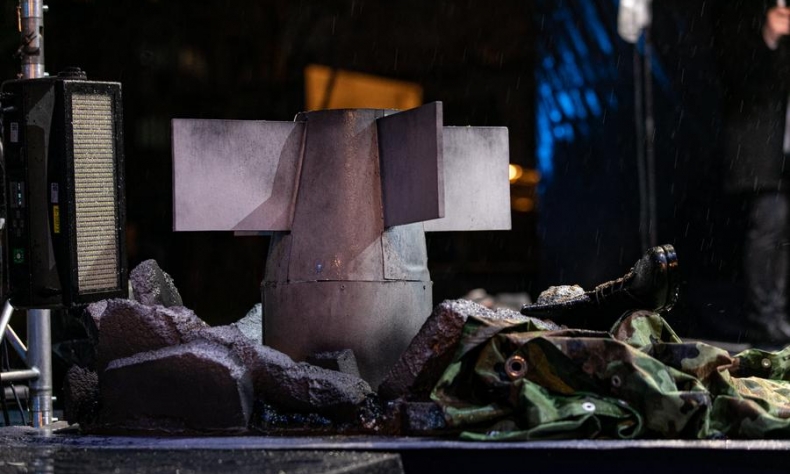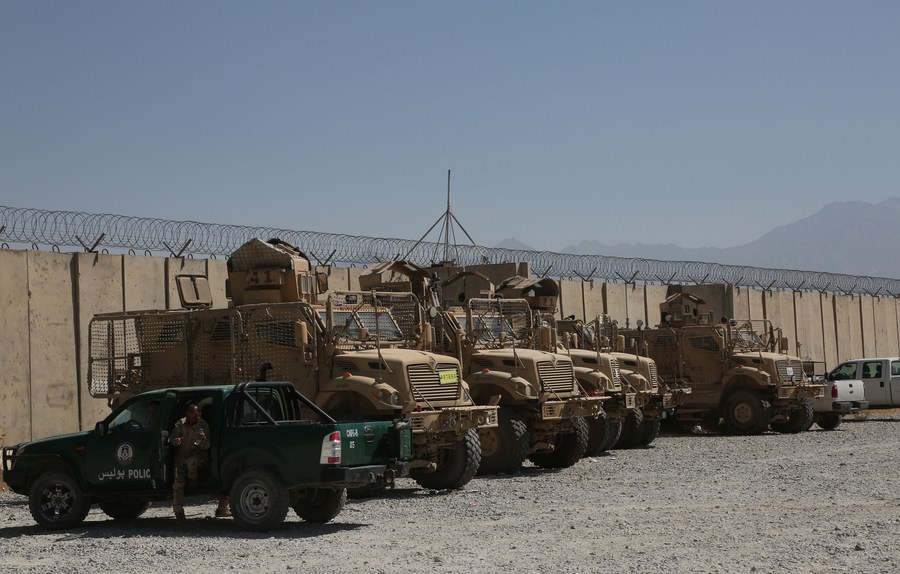A Legacy of Conflict and Controversy

The path to a peaceful future hinges on a unified commitment to peace and saying no to NATO and its proxies.
As the alliance celebrates its 75th anniversary, it is facing increasing scrutiny for its violations of international law and its failure to protect civilians in numerous conflicts.
The North Atlantic Treaty Organization (NATO), widely regarded as the most notorious and venomous military alliance in history, celebrated its 75th anniversary in Washington D.C. on July 9-10, amid claims of establishing global peace. However, NATO’s actions have often spread war across continents in pursuit of supremacy. Following a disastrous performance in the presidential debate, President Joe Biden unsurprisingly announced increased military aid to Ukraine, using the small European nation to target their “designated enemy.” NATO’s ambitions are clear: to weaken Russia through proxy wars and to provoke China into potential conflict in Asia.
However, finding examples where NATO has truly ensured peaceful lives for ordinary people, rather than pursuing its broader goal of supremacy through alliances with enemies of its enemies, remains challenging. NATO must be held accountable for its violations of international law and its failure to protect unarmed civilians in nearly every conflict it has engaged in since its inception.
Previous wars
While NATO celebrated its 75th anniversary, mainstream media barely acknowledged the 25th anniversary of NATO’s intervention in Yugoslavia—a glaring failure of this war-oriented alliance. June 10 marked the 25th anniversary of the end of NATO’s bombing campaign in the Federal Republic of Yugoslavia, initiated without UN Security Council approval and lasting 78 days. NATO dropped 22,000 tons of bombs, including 15 tons of depleted uranium, resulting in over 2,500 deaths, including 79 children, and displacing over a million residents. The aftermath included long-term health and environmental impacts from depleted uranium munitions. In the decade following the bombing, approximately 30,000 people in Serbia developed cancer, with over 10,000 deaths. Studies indicate increased cancer rates and other serious health issues among children born after 1999. Three thousand victims have filed lawsuits against NATO, despite the alliance claiming immunity based on agreements with Serbia and Montenegro.

Serbian experts dispute this, stating that no agreements grant NATO immunity for past war crimes. NATO’s attempts to evade accountability only accentuate its war crimes and the suffering it caused. Since its establishment, NATO’s military operations have frequently resulted in chaos and trauma rather than peace and stability. From April 1992 to December 1995, the war in Bosnia and Herzegovina raged among its three main ethnic groups over their future and territorial divisions. Shortly before the outbreak of war in Bosnia, NATO hastily recognized Bosnia and Herzegovina’s independence, exacerbating ethnic conflicts in the region. NATO launched extensive airstrikes against Bosnian Serbs, eventually compelling the three ethnic groups to sign the General Framework Agreement for Peace in Bosnia and Herzegovina.
As a consequence, 278,000 civilians perished, over 2 million people became refugees, and the war inflicted $6.6 billion economic losses, with the majority of economic facilities destroyed. The Kosovo War, ignited by ethnic tensions and led by the U.S.-backed NATO without UN authorization, lasted from March 24 to June 10, 1999. The three-month bombing campaign caused 1,800 civilian deaths, 6,000 injuries and substantial infrastructure damage, amounting to economic losses of $200 billion. This marked NATO’s first offensive war against a sovereign state without UN approval, marking a shift towards interventionism and expansionism.
NATO’s actions violated international law, including the UN Charter and the Vienna Convention on Diplomatic Relations, through the use of force against Belgrade. Despite this, no NATO member has been fully held accountable for their actions, in stark contrast to incidents involving their erstwhile puppets, such as the swift hanging of Iraq’s Saddam Hussein by Western forces or the extrajudicial killing of Muammar Gaddafi of Libya, famously summed up by former Secretary of State Hillary Clinton as “We came, we saw, he died.” In Afghanistan, the U.S.-led NATO coalition launched a war against Al Qaeda and the Taliban on October 7, 2001, in response to the September 11 attacks on the U.S.
The two-decade-long conflict ended abruptly with the withdrawal of U.S. and NATO forces in May 2021, resulting in 241,000 deaths, including 71,000 civilians, and displacing millions.
The war generated significant economic losses, averaging approximately $60 million per day, and led to social disorder in Afghanistan, with 72 percent of the population living below the poverty line. A new report issued in early July by the United Nations International Children’s Emergency Fund (UNICEF) revealed shocking statistics: over 24 percent of Afghan children aged 5-17 experience anxiety, while 15 percent suffer from depression in this war-torn country.
This is the legacy left behind by those who claimed they could guarantee a peaceful life under a rules-based system founded on democratic norms. During this period, terrorist networks such as the East Turkestan Islamic Movement and Al Qaeda expanded, worsening regional instability. This pattern of devastation persisted in Iraq and Libya, where NATO interventions resulted in substantial civilian casualties and prolonged instability.

Conflicts underway
NATO’s actions consistently undermined peace and security, earning it a reputation as a war machine rather than a force for peace. However, in Ukraine, NATO finds itself in disarray, having underestimated Russia’s determination to defend its interests while overestimating its ability to expand its military alliance to Moscow’s doorstep. The strategy of flooding Ukraine with weaponry for a swift victory has backfired, with Russia proving resilient in defense.
As the conflict drags on, NATO member states face escalating costs and inflationary debt, while Ukraine depletes its fighting-age soldiers. Western leaders, deeply invested in the conflict, encounter diminishing confidence in Ukraine’s capacity to reclaim territories without escalating the conflict and potentially involving NATO troops—a move that lacks public support. In recent months, Russia has made incremental territorial gains, advancing in the Kharkiv Oblast and compelling Ukrainian forces to retreat from a neighborhood in Chasiv Yar, Donetsk.
However, the lack of significant progress has raised doubts about Russia’s capabilities. While struggling to maintain the frontline, Ukraine has targeted Russian ships, energy depots, and border regions with drones, resulting in casualties. Two and a half years into the conflict, neither side appears capable of achieving a military solution. The Russia-Ukraine conflict has bolstered NATO’s resolve, which now pledges long-term support for Kyiv. A viable resolution entails bringing both parties to the negotiating table.
Historians might view the U.S.-led NATO expansion as a strategic failure that catalyzed the formation of an alliance among BRICS nations to counter it. The summit’s news report highlighted NATO and its Indo-Pacific partners—Japan, the Republic of Korea, Australia and New Zealand—launching four joint projects aimed at deepening cooperation, announced by U.S. National Security Advisor Jake Sullivan at the NATO Defense Industry Forum. Amid the celebration of this military alliance, Asia faces the daunting task of safeguarding its position against a coalition adept at leveraging proxies to achieve its objectives. This historical pattern resonates with poignant examples throughout history.
Asia’s imperative now is to cultivate robust trade relationships and settle territorial disputes through constructive dialogue, preempting external interference. History presents a stark choice: yield to foreign ambitions, akin to the post-World War II tragedies and subsequent killing fields from Viet Nam, Laos, Cambodia, and West Asia to present-day conflicts in Afghanistan, Libya and Syria, or thrive together in dignified coexistence. The path to a peaceful future hinges on a unified commitment to peace and saying no to NATO and its proxies.
The author is a Sri Lankan-born journalist and author. He is the founding editor of the Sri Lanka Guardian website.
 Facebook
Facebook
 Twitter
Twitter
 Linkedin
Linkedin
 Google +
Google +










